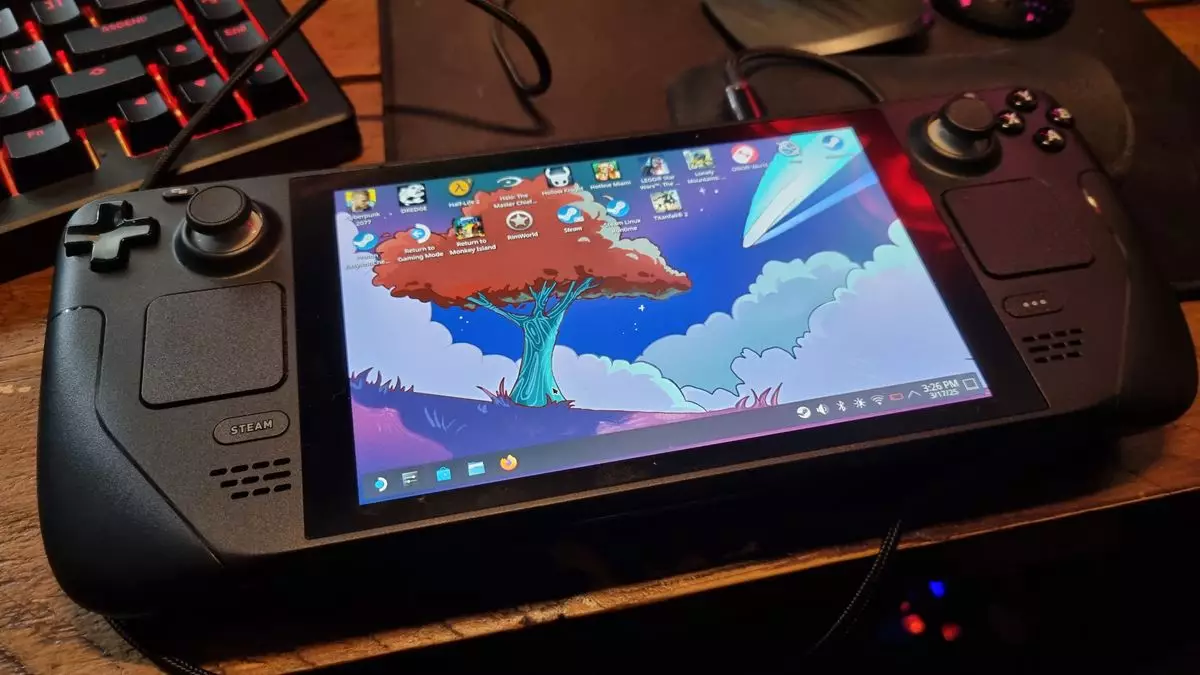SteamOS 3.0 has carved out an impressive niche since its debut with the original Steam Deck in 2022. The Linux-based operating system was initially tailored for Valve’s beloved handheld but the gaming world stands poised on the brink of a larger revolution. The recent announcement regarding the Lenovo Legion Go S’s integration with SteamOS marks a significant turning point in this narrative. As Valve releases the SteamOS 3.7.0 Preview — aptly dubbed the “Pi Day update”—we see the first inklings of support for non-Steam Deck handhelds. Venturing into this landscape raises important questions about the future of gaming technology and user experience.
Innovation with the Lenovo Legion Go S
Valve has made a commendable move by bringing SteamOS to the Lenovo Legion Go S, a product poised to enhance the handheld gaming experience. This incorporation is not merely a marketing gimmick; it signifies a substantial partnership that could pave the way for future devices. Given that the gaming hardware landscape is rapidly shifting, it seems logical to expect more devices to follow suit, aligning themselves with Valve’s vision of seamless, handheld gaming. The responsibility lies on both the manufacturers and Valve to ensure that this integration is more than just skin-deep, providing gamers with a vibrant ecosystem where their preferences and habits are prioritized.
Aesthetic and Functional Enhancements
One can’t help but marvel at the upgrading aspects of the SteamOS experience with the latest Plasma 6.2.5 enhancement. This update introduces a modernized user interface bedecked with elegant floating panels and a restructured settings menu. Moreover, the whimsical return of the cube effect—where multiple desktops rotate in a visually intriguing manner—adds a dash of nostalgia that speaks to gamers’ yearning for flair amidst efficiency. It’s more than just visual appeal; such attention to detail can significantly enrich the user’s experience by making navigating settings and applications more intuitive.
Despite these advancements, feedback from users suggests a need for caution. Early adopters of the preview update have reported bugs that can hinder the smooth experience expected from a premium gaming OS. Such technical hiccups, including unintentional desktop flashes or system hangs upon simple commands, remind us that even the best innovations may stutter in their infancy. Hence, while Valve inches forward with these updates, players must navigate through a realm of frustration that can accompany tech rollouts.
A Balancing Act: Improvements and Limitations
The inclusion of Bluetooth device compatibility enhancements and fixes geared towards the Deck Dock displays Valve’s commitment to improving the overall functionality of SteamOS. Addressing issues like system update failures due to corrupted files is a critical step forward. However, it prompts important conversations about the balance between innovation and the practicalities of user experience. While Valve’s intentions are commendable, the reality is that many non-SteamOS-supported handhelds currently employ interfaces that, despite possibly lacking direct Steam integration, proficiently manage games on platforms like Windows 11.
Gaming enthusiasts appreciate sleek interfaces that facilitate ease of access without overwhelming the user. This raises the question: is Valve moving fast enough to ensure that SteamOS can compete with the entrenched systems already out there? In an industry that thrives on rapid advancements and user-friendliness, Valve’s push into the handheld market must be robust enough to win over skeptical consumers who are already accustomed to functionality elsewhere.
Positivity in Progress: Future Prospects
Even if the initial offerings may seem underwhelming to dedicated Steam Deck users, the potential for SteamOS to expand into diverse handhelds offers a glimmer of excitement for the future. The idea of a universal handheld gaming experience, where gamers can seamlessly shift between devices with integrated Steam support, is an appealing vision that could revolutionize the way we look at handheld gaming as a whole. Valve’s cautious approach might not win over instant approval from all corners, but it suggests an understanding of careful strategic growth over a rush to market.
In this fast-evolving technological landscape, embracing new advancements is essential. While the fears of “too little, too late” linger in the air, the notion that SteamOS can champion the cause of user-friendly, engaging gaming on the go remains firmly within reach. Amidst potential missteps, it is the unwavering commitment to innovation that keeps the conversation alive in the gaming community, making the arrival of SteamOS on additional handhelds a cause for optimism rather than despair.

